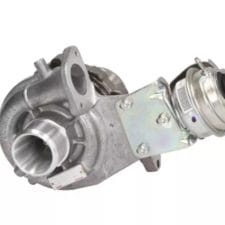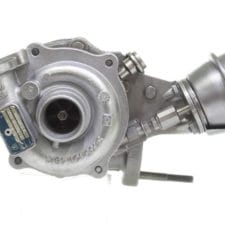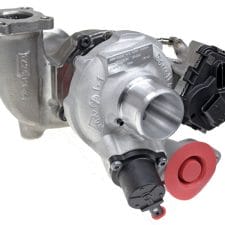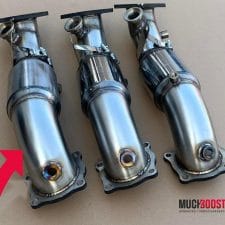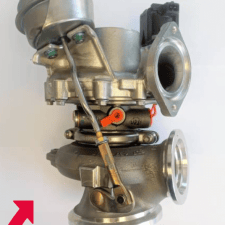No products in the cart.
Typical Turbo Malfunctions
We all want our turbos to last as long as we do, or possibly even longer so that the legacy of our cars can live beyond our years. Unfortunately, as we know, most of the time that’s not the case with modern turbocharged engines. Usually, the turbo is the first thing to go and is in need of fixing or replacing with a new or upgraded unit.
What are the most common turbo failures, and what causes them? We are going to try to answer these questions in this article.
But first of all, what are the signs that your turbo starts to malfunction?
- Loss of power.
If your vehicle isn’t accelerating as quickly as it used to or is slow to respond to your input, it could be a sign that your turbo is failing.
Similarly, turbo failure could be the cause of a turbocharged car’s inability to maintain high speeds or attain the speeds it once did.
- Engine whine.
One of the surprising benefits of a turbocharger is that it muffles the sound of the air intake, making the engine quieter.
If you hear a loud, whining noise that sounds like a dentist’s drill or a police siren, it could be a sign of turbo failure.
The noise will become louder as the fault becomes more serious. If you hear whining from your engine, you should have it checked out by a competent mechanic.
- Smoke coming from the exhaust.
When oil spills into the exhaust system and burns off, it produces a distinctive blue/grey smoke. A crack in the turbo housing or damaged internal seals could be to blame.
If the turbocharger is to blame, the discolored gases are more likely to appear as the engine revs rise quickly after idle.
- Check engine light.
Most current vehicles’ computer diagnostics can detect turbo issues, and the check engine light will illuminate on the dashboard to alert the driver.
The check engine light, however, does not always indicate turbo failure; a professional mechanic will need to undertake additional tests to determine the actual nature of the engine problem.
The most common causes of turbocharger issues:
- Lack of lubrication or delayed lubrication.
When operating, the turbo can spin even at 100000 RPM. While spinning that fast it really needs oil or some other kind of lubrication to keep the bearings from wearing out. The correct flow and pressure of the oil are crucial in order to:
- lubricate the journal bearings,
- stabilize the rotating shaft and the journal bearings,
- cool the turbo before high speeds are achieved
The need for oil as a lubricant and a coolant grows as the turbocharger speed and engine load increase. Bearing failure will occur if the oil reaching the turbocharger is delayed for a brief length of time.
The blueing of the bearings or the shaft is a clear indicator of oil delay. The color of the shaft when it has been exposed to high heat is known as blueing.
- Foreign bodies in the oil.
Many operators mistakenly believe that if they run their engines with unclean or contaminated oil, the oil filters would remove any foreign matter before it reaches the engine and, in our instance, the turbocharger bearings: this is a costly mistake.
All of these elements can damage bearings if the amount is big enough to induce bearing wear and bearing-housing bore wear, or if the dirt particles are large enough to block the internal oil passageways of the turbo, starving the unit of oil.
Because the turbocharger rotates at significantly faster rates than the engine, the turbo bearings are more prone to break before the main engine bearings. The blade tip speed on the compressor wheel of an 80,000 rpm device is 700 miles per hour. Turbocharger blades may now reach speeds of nearly 1,000 miles per hour in new designs.
- Oil wear.
Although modern oil technology has come a long way in terms of supplying superior oils, we still have two main issues to deal with:
A) Oil deterioration: Oils can crack or break down due to the high temperatures found in modern diesel engines. Carbonaceous (tarry) materials are produced as a result of this activity, which adheres to the engine rings and causes problems. The hydrocarbons in the oil react with the oxygen to form organic acids, which are divided into two categories: those with low boiling points and those with high corrosive properties.
These goods are to blame for a number of issues with diesel engines and turbochargers. If the acids are allowed to concentrate, they will attack the bearings and other components, causing pitting and failure. They also react with the remaining oil to generate sludge, which is subsequently deposited throughout the engine, especially in the filters, causing the turbocharger oil supply to be aggravated. Hard varnish appears when there is more oxidation.
When sludge is allowed to collect in oil systems, it is flung against the walls and interior surfaces of the bearing housing by centrifugal force as it travels through the turbo, where it can stick and obstruct free oil flow. The build-up will eventually cause problems with oil drainage, culminating in oil spilling from the turbine end of the unit.
If this matter is allowed to accumulate on the turbine side, the heat will produce baking, which will result in a turbocharger system that is unbalanced.
B) Outside contamination: So far, we’ve looked at how oil breaks down due to changes in the oil, which are mainly produced by heat and air exposure. Other agents, on the other hand, must be considered.
The results of fuel combustion, such as ash, soot, the unburned heavy ends of the fuel, and water, are among them. All of these factors contribute to oil pollution.
The engine itself adds to oil degradation by allowing tiny metal particles created by wear and tear to travel through the oil channels into the turbo or oxidize and accelerate deterioration.
Finally, the air intake system allows foreign matter from outside the engine, such as dust and dirt, to enter the cylinders.
- Foreign bodies in the exhaust and/or the air filter.
Any substance that gets into these systems will undoubtedly damage the turbocharger and maybe the engine.
Because a turbocharger is a precision instrument, any particles that get into the casings will cause damage to the wheels, which could result in chunks of aluminum getting into the engine, causing damage to the pistons, valves, lining, and possibly the crankshaft.
Dust in the air system to engine valve fragments in the exhaust system are examples of this type of substance. If any foreign body remains in these systems, the turbo will react with possible power loss, black smoke, increased oil usage and leakage, and broken wheels.
- Stuck EGR
The EGR valve in the exhaust system is the main problem. Carbon/exhaust soot builds up on the EGR valve over time, causing it to stick and damage the turbocharger.
Remove the exhaust manifold, inspect for excessive carbon/soot buildup, then clean/replace the EGR valve as needed to avoid this from happening again.
- Poor quality and materials.
To achieve the highest OE criteria, only quality assured materials are utilized, and frequent quality checks on both material and workmanship are performed.
The turbocharger is perhaps the most misunderstood component of the engine, and it is because of this lack of understanding on the part of the owner that turbocharger service is so tough.
As we’ve seen, a turbo boosts an engine’s power by around 30% without changing any of the engine’s operational characteristics; it simply does what the engine instructs it to do.
The turbocharger gets its power from the exhaust gases produced by the engine, which are controlled by flow, pressure, and temperature. If the engine has a problem or is in an abnormal state of operation, the turbocharger will not fix it; instead, it will exacerbate the problem.
As a result, just replacing a broken unit with a new one does not necessarily address the issue. If we have any doubts, we should study the engine handbook that came with the vehicle.
-
 1.6JTDM/Multijet Hybrid Turbo Upgrade Alfa Romeo MiTo, Fiat 500L, Bravo II, Grande Punto, Punto EVO, Idea, Lancia Delta III, Musa I949,00 € – 1039,00 €
1.6JTDM/Multijet Hybrid Turbo Upgrade Alfa Romeo MiTo, Fiat 500L, Bravo II, Grande Punto, Punto EVO, Idea, Lancia Delta III, Musa I949,00 € – 1039,00 € -
 1.3 Multijet Hybrid Turbo Upgrade Alfa Romeo MiTo 1.3JTDM, Fiat Doblo, Grande Punto, Idea, Linea, Lancia Musa, Ypsilon1099,00 €
1.3 Multijet Hybrid Turbo Upgrade Alfa Romeo MiTo 1.3JTDM, Fiat Doblo, Grande Punto, Idea, Linea, Lancia Musa, Ypsilon1099,00 € -
 1.5 VGT Hybrid Turbo Upgrade Alfa Romeo Tonale 48V1999,00 €
1.5 VGT Hybrid Turbo Upgrade Alfa Romeo Tonale 48V1999,00 € -
 2.4 JTDM Hybrid Turbo Upgrade Alfa Romeo 159, Brera, Spider, Fiat Croma II1099,00 € – 1299,00 €
2.4 JTDM Hybrid Turbo Upgrade Alfa Romeo 159, Brera, Spider, Fiat Croma II1099,00 € – 1299,00 € -
 Alfa Romeo 2.0T De-Cat/Sport Cat 100CPSI Downpipe for Alfa Romeo Giulia, Stelvio899,00 € – 1249,00 €
Alfa Romeo 2.0T De-Cat/Sport Cat 100CPSI Downpipe for Alfa Romeo Giulia, Stelvio899,00 € – 1249,00 € -
 1750/1.8 TBi Hybrid Turbo Upgrade Alfa Romeo 159, Giulietta, Lancia Delta III 1.8 DI T-Jet1799,00 € – 1999,00 €
1750/1.8 TBi Hybrid Turbo Upgrade Alfa Romeo 159, Giulietta, Lancia Delta III 1.8 DI T-Jet1799,00 € – 1999,00 € -
 2.2D Multijet II Alfa Romeo Hybrid Turbo Upgrade Alfa Romeo Giulia, Stelvio1599,00 €
2.2D Multijet II Alfa Romeo Hybrid Turbo Upgrade Alfa Romeo Giulia, Stelvio1599,00 € -
 N74 6.0/6.6 V12 Hybrid Twin Turbo Upgrade Rolls-Royce Ghost, BMW 760i F01/F02/F031949,11 € – 8129,11 €
N74 6.0/6.6 V12 Hybrid Twin Turbo Upgrade Rolls-Royce Ghost, BMW 760i F01/F02/F031949,11 € – 8129,11 € -
 1.4 TB/T-Jet Hybrid Turbo Upgrade Fiat 500 Abarth 595, Grande Punto, Alfa Romeo Giulietta, MiTo1105,77 € – 1474,77 €
1.4 TB/T-Jet Hybrid Turbo Upgrade Fiat 500 Abarth 595, Grande Punto, Alfa Romeo Giulietta, MiTo1105,77 € – 1474,77 €
